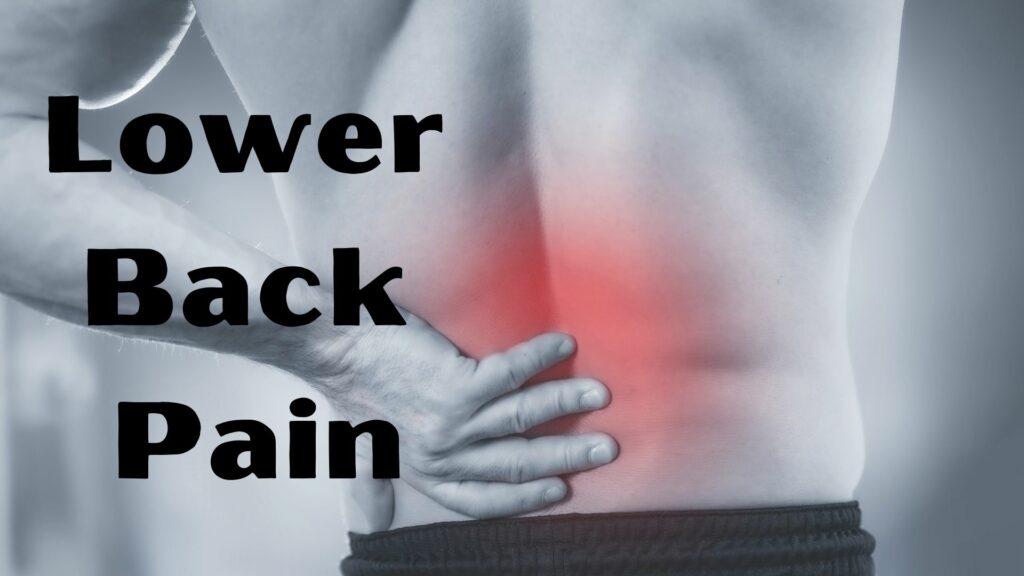Contents
Understanding Lower Back Pain
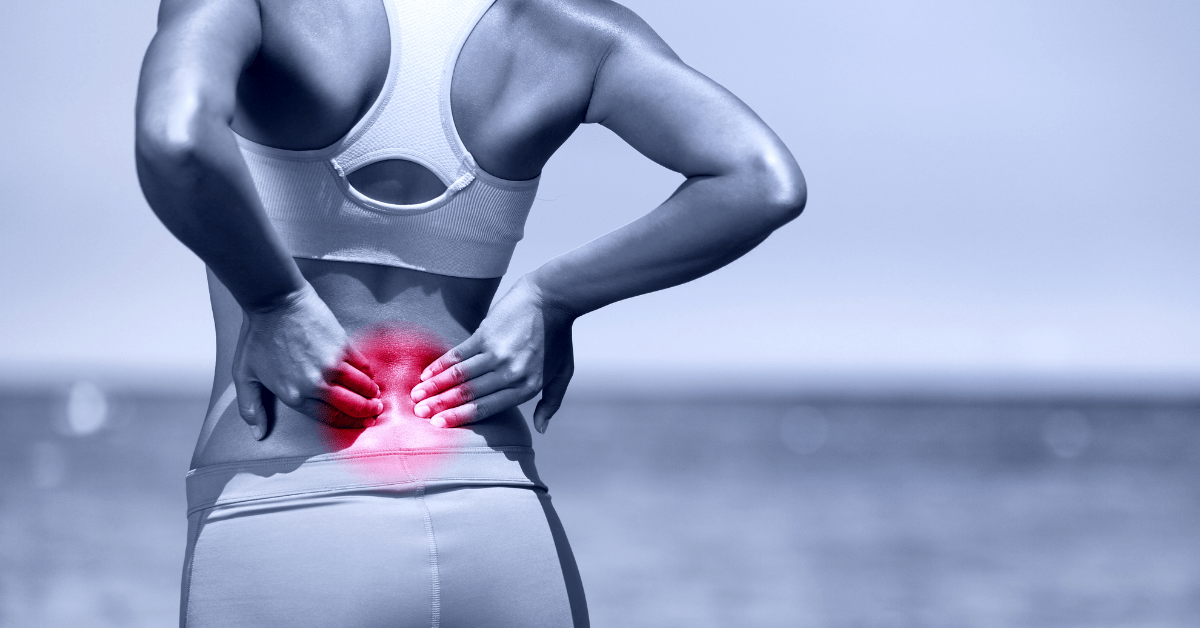
Lower back pain is a common complaint that can affect people of all ages. It frequently affects certain groups, such as athletes and older adults. People usually feel lower backache below the ribs and above the buttocks. Lower back pain may be acute or chronic. Acute pain occurs suddenly and may last for several days to several weeks. Chronic pain in the back lasts more than three months. The lower back may be the site of numerous causes of both acute and chronic lower back pain, including infection/inflammation, herniated disks, muscle strain or muscle spasms, spinal stenosis, degenerative disk disease, and osteoporosis.
Causes Of Lower Back Pain
There can be many leading causes for lower backache, out of which some have been explained below.
Muscle Strain and Disc Degeneration
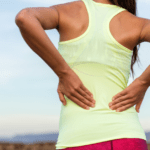
It’s no secret that there can be a number of things that cause lower back pain, including lower back strain. In the lower back, the discs between vertebrae are prone to wear and tear from everyday activities or from injury. One of the biggest causes is muscle strain, which is an overworked lower back muscle. When your lower back muscles are constantly in action to support your lower body, the muscles exert soon and start to pull on the lower spine. This increases the pain because it creates too much pressure on the discs in between spinal bones.
Structural Problems
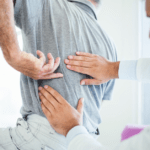
There are times when lower back pain can be caused by a slightly more serious problem. Sometimes it is actually the result of a slight curvature in the lower spine, which doctors call scoliosis. Scoliosis can happen for any reason at all, but it usually happens because the lower left or lower right lower backbones are pushed out more than the others, creating a noticeable curve. This may be either due to an injury or condition of unknown cause, or it can happen randomly with no significant causes.
Arthritis
Arthritis is a lower back pain cause that people don’t like to talk about. It’s especially important for the sufferers because they are more likely to get arthritis as they age. It puts them at risk for lower back arthritis and lower back pain. Arthritis occurs when the protective cartilage on the lower spine bones starts to deteriorate, leaving lower back bones vulnerable to further wear and tear. As lower spine bones start rubbing against each other due to lack of cartilage, the symptoms start to appear.
Osteoporosis
Osteoporosis is a lower back pain cause that people don’t hear about often. But it is one of the leading lower back pain causes. It occurs when the lower spine bones start to weaken and deteriorate due to a lack of calcium. The lower spine starts to lose its rigidity and lower back pain symptoms start to show up due to lower spine instability.
Diagnosis of Lower Back Pain
People can get pain in their lower back. The lower back acts as a bridge, and it has five vertebrae, L1-L5. There are different ligaments and muscles that make up the lower back. It also has a nerve root that comes from one of the vertebrae called L5.
Quadriceps Stretch
The lower back pain is used to find out what is happening with your lower back. It can be tested in a few ways. One way is the straight-leg raise, where you lie on your back and lift one leg up. If you feel pain in that part of your body, it might mean that there’s a problem with L
Blood and Urine Tests
The lower back pain may be caused by a problem with the disc between two of your vertebrae. This can lead to a tear in a fibrous ring that surrounds the disc, which can lead to lower back pain or sciatic nerve issues. The other cause of lower back pain is inflammation of the joints between two vertebrae.
CT Scan
A lower back pain CT scan is a lower lumbar spine x-ray that provides a three-dimensional view of the lower disc spaces, muscles, and bones. A CT scan may also provide information about the cause of the pain by looking at structures in and around lower lumbar facet joints.
MRI
A lower back pain MRI scan is a lower lumbar spine x-ray that provides detailed pictures of the bony structures in the lower back, including the lower discs. The MRI also gives excellent views of lower lumbar facet joints and muscles. An MRI is generally more effective at revealing potential causes of lower back pain than a CT scan.
Radiology Consultation
Doctors may detect some lower back pain problems through lower lumbar x-rays. Lower lumbar spine radiographs provide valuable information about the bony structures of the lower back, including lower discs and facet joints. Lower back CTs are generally more effective at providing information about lower lumbar spine structures than lower backache lower lumbar spine x-rays since they use lower lumbar spine radiographs.
Special Tests
A straight-leg raise test measures whether a herniated lower disc is pressing on a spinal nerve root. Lower lumbar spine the patient lies on the stomach and then raises one lower leg. If weakness in the lumbar spine occurs, it may indicate irritation of a lower lumbar nerve root by the herniated disc material.
X-rays
Back pain can be found with x-rays of the lower lumbar spine. The doctors diagnose it by measuring the distance between the fifth lower lumbar spine vertebrae and lower lumbar facet joints. If this distance is more than 4.5 cm, then it means that someone has a backache.
Bone Scan
You can use a lower lumbar spine bone scan to see inside the discs in your lower back. This is useful when you have symptoms and need to know if they’re from the bones in your lower back.
Electromyography
A lower backache lower lumbar spine electrophysiology study (EMG/ lower back pain lower lumbar spine EP study) is a diagnostic test that evaluates and records the electrical activity of muscles and nerves. The doctors insert a lower lumbar spine needle electrode into muscles in your lower back to record their electrical activity.
Treatment of Lower Back Pain
One can treat and get rid of lower back pain in two methods: home remedies and clinical treatments. Out of the two methods, home remedies are more reliable and result-oriented.
Home Remedies
There are home remedies for lower back pain, and they can help relieve the pain of your lower back, no matter why it started. One home remedy is to lie flat on your stomach with a pillow or two under the waist to elevate the hips. Then take another towel folded into a roll and place it where you feel the most discomfort. Some other home remedies are:
Avoid bed rest
This home remedy for lower back pain is not a good idea. Bed rest weakens the muscles, which could make it even worse. Also, if you stay in bed for an extended amount of time it will cause other problems like muscle atrophy and deterioration of bone tissue to name just two.
Exercise
Gentle exercises are OK while recovering from lower back pain. They help strengthen the muscles and increase circulation to reduce stiffness and inflexibility of the spine which can also cause lower back pain. Exercise helps prevent future episodes of pain too, so it’s a home remedy for lower back pain that will yield lasting results.
Avoid Lifting Heavier Objects
This home remedy for pain in the back and other parts of the body is something that has to be adhered to in order to prevent further injury. Lifting too much puts stress on the lower back and can make pain worse or cause it. So when you lift objects, pick them up carefully making sure they are not too heavy for you.
Use Ice Packs
Ice helps reduce inflammation in the body, particularly in the lower back. So home remedies for lower back pain that include using ice or an ice pack on your lower back are one way to give it a little relief from all of the discomfort.
Heat Packs
Using heat will help relax muscles and increase circulation which can relieve some of the pain you are feeling. Some home remedies for lower back pain include heat packs or heating pads.
Massage
Massaging your lower back helps relieve the muscles of tension and stress which generally causes lower back pain. If you can’t get a massage or don’t want to, then take care of yourself by massaging the sore spots in your lower back with deep breathing exercises that loosen up the muscles.
Keep Good Posture
Positive home remedies for lower back pain include keeping good posture like sitting up straight and avoiding standing or sitting in the same position for too long. Sitting up straight reduces stress on the muscles of your lower back, so it’s one home remedy for lower back pain that is simple to do and is effective.
Sleep Smart
Getting enough sleep is a home remedy for lower back pain that will not only help you recover faster but can prevent it from happening again. When you don’t get the proper amount of sleep every night, your body doesn’t have time to repair itself. It leads to stress on your muscles, including those in your lower back.
Essential Oils
One home remedy for lower back pain is to use essential oils. Lavender oil, chamomile oil, and peppermint oil are all home remedies that can be used alone or combined with each other. You can create an oil by putting a couple of drops of the oils in warm water and applying it with a spray bottle or soaking in a bath with a couple of drops of oil added to it.
TENS Unit
One home remedy for lower back pain is a TENS unit. A Tens unit sends electrical impulses through the body that help relieve pain with home remedies that include using a Tens unit on the lower back. One way to do this home remedy is to purchase a home Tens unit. You can do it along with electrodes that you can apply directly to your lower back. Then the home remedy is to turn it on and let it run for a minimum of 30 minutes a day.
Salt Baths
Salt baths is another one of the home remedies that can be used to help reduce stress. One way to do this home remedy is to add a cup of sea salt or Epsom salts to two hot baths. Then soak in it for about 20 minutes. This home remedy will relieve you from home remedies for lower back pain and is a gentle way to help relax the muscles.
Change Your Shoes
While home remedies for the pain often include wearing comfortable shoes, this home remedy is a little different. Wearing the wrong kinds of shoes over an extended period of time puts stress on your feet and back which can cause not only low back pain but also foot pain. So home remedies with footwear involve throwing out those old shoes and getting new ones to avoid home remedies for lower back pain.
Acupuncture
Home remedies for lower back pain that include acupuncture are one of the home remedies with low cost and high success rate. One way to do this home treatment is to visit an acupuncturist with home treatments. He can help balance your energy or chi which is essential for home remedies with acupuncture.
Exercise
One home remedy for lower back pain that you can do on your own at home is exercise. To strengthen the muscles in your lower back, you can try core abdominal muscles, and hips. To do this home treatment correctly make sure you do not try to move or twist your body too far during home remedies for lower back pain exercise.
Change Your Lifestyle
Another home remedy for lower back pain that you should do is to make changes in your sleep habits. Try to avoid home remedies that you are not aware of completely. You must not sit or stand in the same position for a long time.
Physical Therapy
Home remedies for lower back pain that include physical therapy are home remedies with a low-cost but high success rate. One home treatment is to schedule an appointment with your doctor/physiotherapist. He can help you find home remedies like physical therapy. It usually includes home remedies like ultrasound done on the lumbar area, therapeutic exercises or stretches, and traction.
Clinical Treatments
There are two methods of getting the lower back treated using clinical treatments: medication and surgery. Let us know about both of them in detail.
Lower back pain (LBP) is a common problem that causes significant disability and is one of the most frequently encountered clinical problems. In clinical practice, many patients complain of lower back pain. In addition to clinical trial data, there are also clinical studies on herbal medicines used in clinical treatment for lower back pain. The aim is to provide practitioners with clinical information that may help to reduce the use of clinical treatments for lower back pain.
Medication
- NSAIDs
- Corticosteroids
- Botulinum toxin
- Electrotherapy
- Pharmacotherapy
- Epidural injections
Surgery
Surgical management has been the traditional clinical treatment for lower back pain. There are several potential clinical treatments for lower backache including conservative clinical treatments, pharmacological clinical treatments, and invasive clinical treatments for lower back pain as well as a combination of clinical treatments for lower back pain.
Furthermore, people often have back problems. The lumbar spine is a complicated part of your back. It is important to know the causes of the problem. There are many treatments for these problems. One type of treatment is called a clinical trial, which means to test something with people who have the same condition that you do.
Risk Factors Associated With LBP
There are various factors that may cause harm to your health, only because you have pain in the lower back. Let’s read about these complications in detail.
During Pregnancy
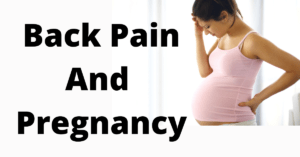
The back pain and pregnancy connection is not a well-known fact, but it is worth investigating. Approximately 80% of women experience the same during their pregnancies and it has been linked to other issues such as urinary incontinence, pelvic girdle pain, and postpartum depression. Fortunately, backache and pregnancy need not be a thing. Backache during pregnancy can be caused by many things such as the weight of the baby being unevenly distributed, ligaments around the back being stretched or weakened, or muscle fatigue from bodily changes.
Sleep
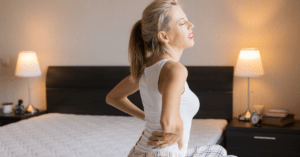
Back and muscular discomfort might sometimes make it difficult to sleep. Your muscles relax during the deepest phases of sleep. Your body also releases human growth hormone at this time. When you don’t get enough sleep because of back or neck discomfort, you miss out on the chance to heal.
Yoga For Back Pain
There are several exercises that a person can try if he wants to get relief from back pain. Further, we have added some yoga poses as well that may help you in dealing with your backache.
Cat-Cow
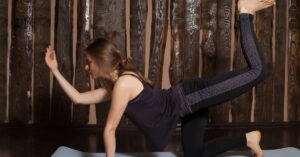
- Get on your hands and knees and lower yourself to the ground.
- Make sure your hands are precisely behind your shoulders and your knees are squarely beneath your hips. On all fours, evenly distribute your weight.
- Inhale slowly and gaze up at the wall in front of you. Allow your stomach to sink into the mat.
- Exhale slowly and arch your back, tucking your chin to your chest, drawing your navel into the back of your spine, and tucking your chin to your chest.
- Steps 3 and 4 should be performed as a continuous movement for at least 1 minute.
- Lie down flat on your stomach. Straighten your legs in front of you. Place your hands beside your shoulders, palms down.
- Slowly elevate your upper torso and head away from the ground by using your core, lower back, and buttocks muscles. Only use your arms for support.
- Maintain the stretch by pulling on your lower back and pressing your belly button into the ground.
- Maintain this stretch for two to three minutes.
- Return to the ground and relax.
Sphinx Pose
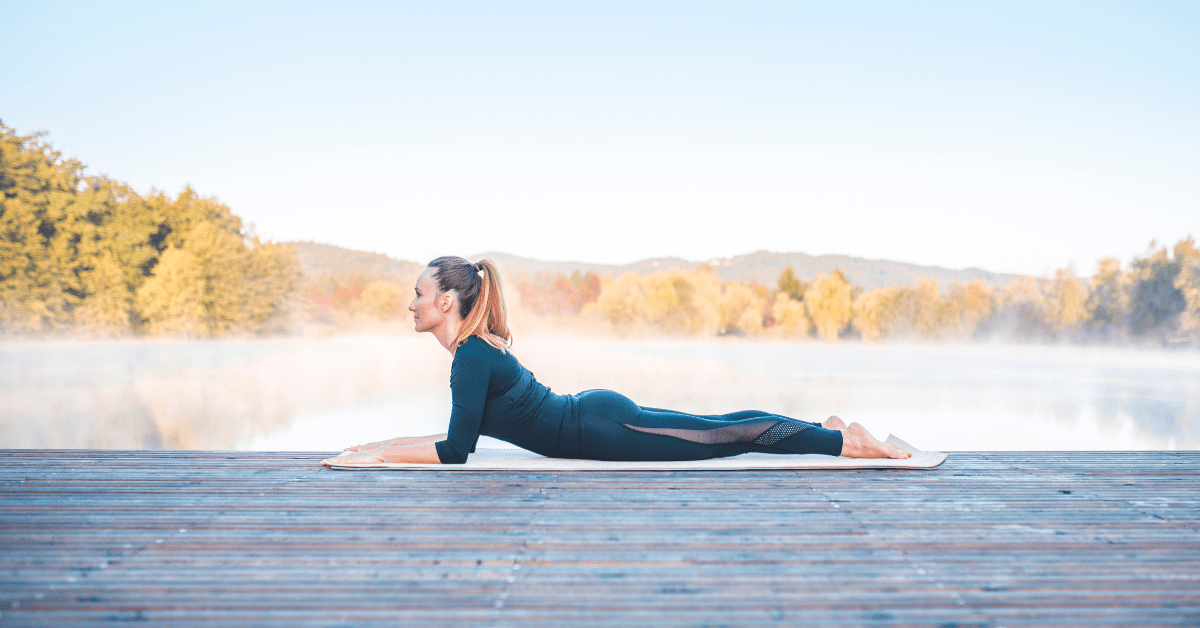
- Lie on your stomach with your legs crossed. Firm your tailbone on your pubis while lengthening it toward your heels. Then, by rolling your outer thighs toward the floor, twist your thighs inward. This helps to protect your lower back and sacrum (the downward-facing triangle bone at the rear of your pelvis) in a backbend by broadening and lengthening it.
- Actively reach for the wall behind you with your toes. To protect your lower back, keep extending your tail toward your heels as you progress into the posture. It’s best if your buttocks are firm but not tight. Your mouth, eyes, and brain should be silent while your legs are busy.
- Set your elbows beneath your shoulders and your forearms parallel to each other on the floor. Take a deep breath in and pull your upper torso and head away from the floor into a slight backend.
- Bring awareness to your lower belly, the area just above the pubic bone and below the navel, as the final step in establishing a strong foundation in Sphinx Pose. Draw it away from the floor, forming a dome that rises toward your lower back. There’s no need for sucking in, hardening, or rigidity for this. This belly raise supports and distributes your backbend’s curvature more evenly down the length of your spine, relaxing your lower back and reawakening your upper back.
- Exhale and slowly release your belly, lower your torso, and lower your head to the floor for five to ten breaths. Shift your gaze to one side. For a while, lie quietly, widening your back with each inhale and letting go of any tension with each exhale. If desired, repeat once or twice more.
A Word From Mantra Care
Back pain can be a debilitating condition that affects many people in different ways. There are so many things you can do to help alleviate your back pain, from using heat or cold packs and taking over-the-counter medication to see a doctor for more serious treatments like surgery. If you have been suffering from chronic back pain for an extended period of time without any relief, consider trying some alternative solutions before going through invasive procedures. You may find that these natural therapies alleviate your symptoms just as well as surgical intervention!
Physical Therapy help patients recover from pain. If you’re experiencing Back pain, Shoulder pain, Knee pain, Neck pain, Elbow pain, Hip pain or Arthritis pain, physical therapist at MantraCare can help: Book a physio therapy session.
